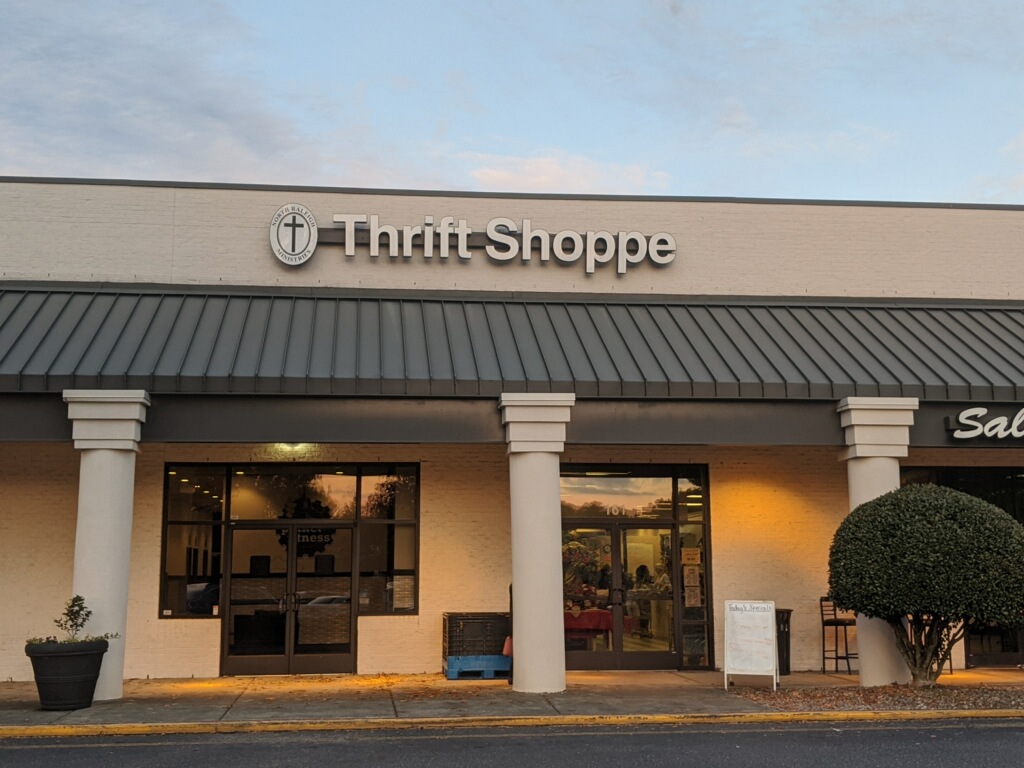The word thrift is the quality of using money and other resources carefully and not wastefully. Thrift stores are places where people can donate previously owned items to be repurchased for less expensive than original retail price.
There is an abundance of unique pieces that can’t be found anywhere else at thrift stores. Different thrift store locations from all over the world can have rare brands that would be worth a large amount of money today.
“I actually went thrifting in New York; I bought a Linkin Park t-shirt,” said Aadit Chetan, a sophomore at Leesville. “The main reason I went thrifting was because you get stuff that you really won’t find made anywhere else.”
“I like to go thrifting because you are able to find clothes and other items for really cheap,” said Olivia Mcguire, a junior at Leesville. “I think it’s really fun to go search through all the different items and find things that you might not be able to find at any other store.”
Although thrifting can be advantageous to the purchaser and their wallet, there is also a great positive environmental impact. Instead of throwing out old or unwanted items, bringing them to a thrift store can be better for the environment.
When you donate and purchase through thrift stores, you are reducing the amount of clothing in landfills. According to Berkeley College, Americans throw away 10.5 million tons of clothing every year. Plastic particles are sitting in landfills for hundreds of years, unable to get rid of without damaging the environment. Thrifting can keep potentially environmentally damaging materials out of landfills.
In relation to fast fashion, purchasing clothing from thrift stores helps decrease the fashion industry’s contributions to environmental decline. The resources needed to put together a singular item of clothing can do great damage to the world’s supply. The use and abuse of resources can be eliminated by saving water and other materials.
“Thrifting, what I would see it as, is like an antique icon. But to reduce the environmental impact that you would get it would have to be on a whole other level,” said Chetan. “You would have to have like, major brands in thrift stores.”
“A lot of the clothes that you find at thrift stores were previously products of fast fashion and if thrift stores were to end fast fashion they would suffer a lot too,” says Mcguire. The ideal fashion style that many consumers look for within fast fashion brands is also found in thrift stores. Purchasing less from thrift stores can also reduce the support of fast fashion companies–companies that greatly contribute to the negatives of the environment.
Another way that thrifting is beneficial is that it avoids the pollution that producing more clothing causes. From the cotton plant that creates the threads to the machine that stitches them together, resource depletion and pollution follow.
Getting the different materials needed to make a specific design means growing cotton and other crops. This production uses pesticides and other factors that can be damaging to the environment.
Clothes are at a constant high demand–crops are being grown all year round in order to get the materials needed to produce clothing. The overworking of the soil can lead to erosion and desertification, making it unusable in the future. This can also lead to a decrease in arable land, making it harder for essential nutrient crops to be grown.
Pesticides help to maintain these crops and their growth. When it rains, water can mix with the pesticides and lead to runoff. This runoff finds its way into nearby bodies of water, potentially contaminating local peoples drinking water. This contamination can put consumers health in jeopardy, causing respiratory issues and pesticides within the bloodstream. With a large amount of controversy surrounding the negative health impacts of pesticides, a lot of unwanted publicity is drawn to pesticide companies and water providers. Thrifting can prevent health issues and reduce the use of likely environmentally detrimental products.
Soil and roots absorb a large amount of pesticide for increased growth after the application of it. The absorption of pesticides into the soil can also acidify the soil; it becomes unsuitable for plant growth. This is another factor that can be fatal to crop production.
Dyes and microscopic fibers are released into the ocean during clothing production, harming ocean life and water quality. The production process also uses a lot of energy that releases toxic gases into the atmosphere, contributing to climate change and global warming. Thrifting decreases the clothing production process’s ecological footprint. Overall, thrifting heavily reduces the environmental impact of clothing production.

Hi! My name is Lyric and I am a senior editor and the website editor for The Mycenaean. I am also Vice President of Quill and Scroll Society, Makeup Crew Head, and a member of National English Honor Society.

Leave a Reply